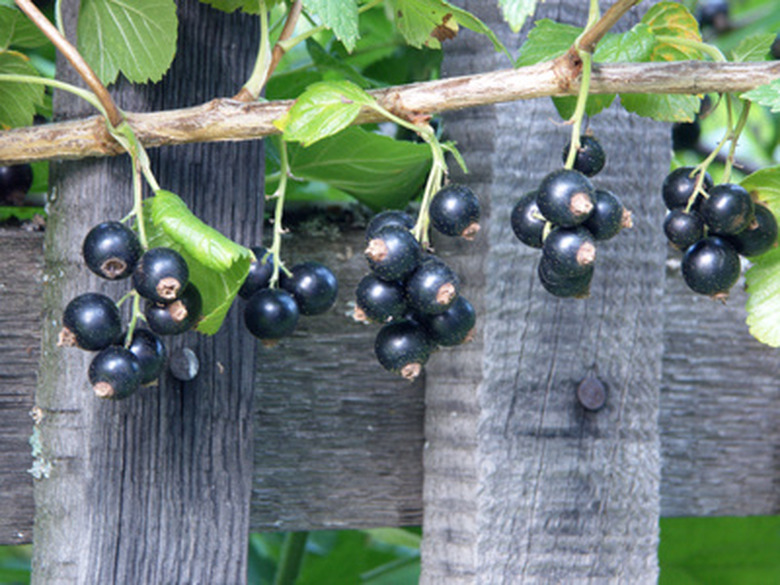How To Make Black Currant Wine
Black currant wine can be a good way to use up these berries which otherwise can be difficult to use in the household. This wild berry wine is a tradition in northern European countries and has a unique, rich flavor. Black currants make a sweet, strongly flavored wine, but aren't as easy to process as softer fruits, because of their tough skins. Keep in mind that if you adjust various steps of this method, you can make a fuller-bodied wine or a light, dry wine depending on the winemaking process. This recipe will make about a gallon of black currant wine at a time, but you can repeat the process as many times as you like to make more.
Step 1
Prepare the black currants for the wine. Wash them thoroughly, and take off any stems, leaves or non-fruit material. Crush the currants with a pestle in what will be your first fermentation vessel, a large plastic bucket that will hold several gallons. Make sure the bucket is clean. Crush up the small fruits well, as they are tough. For a strongly flavored wine, use about 3 pounds of currants, and use about 2 1/2 pounds for a lighter wine.
- Black currant wine can be a good way to use up these berries which otherwise can be difficult to use in the household.
- Black currants make a sweet, strongly flavored wine, but aren't as easy to process as softer fruits, because of their tough skins.
Step 2
Boil a gallon of water in a large kettle or stockpot. Add sugar to the water in proportion with how sweet you want the wine. About 4 pounds is right for a full-bodied wine; use 3 1/2 pounds for a medium-bodied black currant wine. When the sugar is dissolved, pour it over the currants in the bucket. Let cool to room temperature.
Step 3
Add wine yeast and nutrient when the mixture has cooled to about 70 to 75 degrees Fahrenheit, or lukewarm. Stir well. Cover tightly with the lid and set the bucket in a warm place at least overnight, for a medium wine, and as long as five days for a full wine. Stir daily. When it's done, strain out the currant pulp into another bucket and press the pulp well to get all the liquid out. You can do this with a heavy bowl or with your hands.
- Boil a gallon of water in a large kettle or stockpot.
- Cover tightly with the lid and set the bucket in a warm place at least overnight, for a medium wine, and as long as five days for a full wine.
Step 4
Pour the wine into a glass gallon jug. Use a funnel for neat pouring. Crush up Campden tablets as directed on the package, and mix them in water or currant juice. Add to the jug before closing. Seal up the jug with an appropriate-fitting bung and airlock. These are available at winemaking suppliers and seal up the jug for good fermentation, like a temporary cork. If you are making a medium-bodied wine, let it stand until clear, then rack the wine, meaning you siphon off the liquor into another bucket, dispose of the lees, and return the wine to its jug. The lees are the solids that gather at the bottom of the jug during the fermentation process.
- Pour the wine into a glass gallon jug.
- These are available at winemaking suppliers and seal up the jug for good fermentation, like a temporary cork.
Step 5
Rack the wine, as outlined above. For a full-bodied wine, do this three months after its making, then again after another two months, before bottling. For a medium-bodied wine, racking can be done at nine months, and it can go straight into bottles. Bottle in regular wine bottles and cork securely. Store the wine for at least a year before using to allow the flavor to develop. Storing it for longer than a year will improve the taste even more.
Things Needed
- Fresh black currants
- White plastic buckets, 6 to 7 gallons, with lid
- Pestle
- Large kettle or stockpot
- Granulated sugar
- Wine yeast
- Wine nutrient
- Strainer
- Heavy bowl, if desired
- Funnel
- Campden tablets
- Gallon glass jugs
- Bungs to fit jugs
- Airlocks, "bubbler" or S-type
- Siphon hose
- Wine bottles and corks
